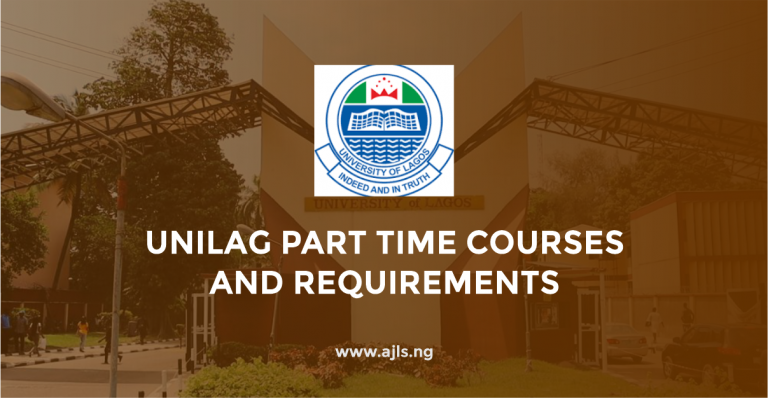WAEC Syllabus on English Language 2025

WAEC English Language Syllabus: The WAEC Syllabus on English Language is designed to help students develop strong communication skills in both speech and writing. It focuses on key areas such as grammar, vocabulary, reading comprehension, essay writing, pronunciation, and listening skills.
The exam aims to test students’ ability to use correct English, understand spoken and written texts, and express themselves clearly. By following this syllabus, students can prepare effectively for the exam and improve their overall proficiency in English. Follow the guidelines provided to learn the WAEC Syllabus on English Language.
Overview of the WAEC Syllabus on English Language
The English Language exam tests student’s ability to communicate effectively in both speech and writing. It evaluates their understanding of grammar, vocabulary, pronunciation, and comprehension skills. The WAEC Syllabus on English Language contains the following:
Goals of the Exam
The exam aims to assess how well students:
- Use correct English in writing and speaking.
- Write clear and well-structured essays for different audiences.
- Organize ideas logically in paragraphs.
- Form correct sentence structures.
- Use a variety of sentence patterns.
- Follow grammar rules.
- Spell and punctuate correctly.
- Understand written and spoken English.
- Recognize implied meanings, tones, and attitudes.
- Pronounce words.
- Identify sounds and letters in English.
- Summarize key information from passages.
Exam Format
The exam consists of three papers:
Paper 1 (Multiple Choice – 40 Marks, 1 Hour)
- 80 questions on vocabulary and grammar.
Paper 2 (Essay, Comprehension, Summary – 100 Marks, 2 Hours)
- Writing an essay.
- Answering questions on a comprehension passage.
- Summarizing a given passage.
Paper 3 (Oral English – 30 Marks, 45 Minutes)
- 60 multiple-choice questions on pronunciation, stress, and intonation (for Nigeria and Liberia).
- Listening comprehension (for Gambia and Sierra Leone).
Topics Covered
The test covers different areas of English, including:
- Vocabulary: Common words related to daily life and various fields like health, law, business, science, sports, and technology.
- Idioms and Expressions: Understanding phrases like “hook, line, and sinker” and their meanings.
- Grammar and Structure: Correct verb tenses, prepositions, pronouns, and sentence formation.
- Figurative Language: Recognizing metaphors, similes, and other non-literal expressions.
The exam is designed to measure not just knowledge of English but also the ability to use it effectively in different situations.
Understanding Figurative Language and Sentence Structure in English
In the test of figurative language, students must recognize when a phrase is used in a non-literal way rather than just understanding its literal meaning.
Sentence Structure (Grammar Rules)
This section covers:
- Changes in word forms: Understanding how words change to show number (singular/plural), tense (past, present, future), and degree (comparisons like big, bigger, biggest).
- Word combinations: How different types of words (nouns, verbs, adjectives, etc.) come together to form phrases and sentences.
- Use of grammar words: Correct use of conjunctions (and, but, because), determiners (the, a, an), and prepositions (in, on, at).
Literature Section
The literature questions are divided into:
- Drama (10 questions)
- Prose (10 questions)
- Poetry (10 questions)
For prose and drama, students must study one prescribed text each.
Paper 2: Writing, Comprehension, and Summary
Section A: Essay Writing (50 marks, 50 minutes)
Students must write one essay from five given topics. The types of writing may include:
- Letters
- Speeches
- Storytelling (Narration)
Descriptions
- Debates or arguments
- Reports
- Articles
- Explanations (Exposition)
- Creative writing
Scoring criteria:
- Content: How relevant the ideas are to the topic.
- Organization: Proper structure, paragraphing, and logical flow of ideas.
- Expression: Use of appropriate vocabulary and sentence structure.
- Grammar and Mechanics: Correct use of spelling, punctuation, and grammar.
Minimum word count: 450 words.
Section B: Comprehension (20 marks, 30 minutes)
Students will read a passage (at least 350 words) and answer questions that test their ability to:
- Find synonyms for selected words.
- Understand the key points in the passage.
- Make inferences (read between the lines).
- Identify emotions, tone, and attitude in the passage.
- Recognize and explain grammatical structures.
- Identify literary devices (e.g., metaphor, irony).
- Rewrite phrases or sentences in a different form while keeping the meaning.
The passage will be selected from modern English texts and will be relevant to students’ experiences.
Section C: Summary (30 marks, 40 minutes)
Students will read a 500-word passage and summarize key details. The test focuses on:
- Picking out the most relevant points.
- Avoiding unnecessary repetition.
- Writing a clear and concise summary.
The passage may be from a story, dialogue, or discussion on social, cultural, economic, or political topics.
Paper 3: Oral English (30 marks, 45 minutes)
This section tests spoken English and varies by country:
- Ghana, The Gambia, and Sierra Leone: Listening Comprehension Test
- Nigeria and Liberia: Test of Oral English
Listening Comprehension Test (For Ghana, The Gambia, and Sierra Leone)
Students will listen to a recorded passage and answer 60 multiple-choice questions testing:
- Pronunciation of consonants, vowels, and diphthongs.
- Stress and intonation patterns in speech.
- Understanding dialogues and narratives.
- Recognizing rhyming words.
- Identifying emphatic stress (words that are stressed for emphasis).
Note: A CD player will be used for this test.
Key Areas in Oral English Test
The Oral English test will include 60 multiple-choice questions covering different aspects of pronunciation and speech.
Consonants:
- Recognizing and pronouncing single consonant sounds correctly (e.g., pit vs. bit, fan vs. van).
- Understanding consonant clusters (groups of consonants together), both at the beginning and end of words (e.g., play vs. pray, felt vs. felled).
Vowels:
- Identifying pure vowels (e.g., seat vs. sit, cart vs. cat).
- Recognizing diphthongs (combined vowel sounds, e.g., pair vs. purr).
- Understanding triphthongs (three vowel sounds in one syllable, e.g., fire, hour).
Rhymes:
- Recognizing words that sound alike, such as missed vs. mixed or load vs. lord.
Word Stress and Syllables:
- Knowing which syllables to stress in words (e.g., ‘import (noun) vs. im’port (verb)).
- Understanding how stress placement changes the meaning of words.
Sentence Stress and Emphasis:
- Knowing which words to stress in a sentence (e.g., main verbs, nouns, adjectives).
- Identifying emphatic stress, which highlights important words to change meaning (e.g., He borrowed my newspaper vs. He borrowed my newspaper).
Intonation Patterns:
- Understanding falling intonation (used in statements and commands, e.g., Come here!).
- Recognizing rising intonation (used in yes/no questions, e.g., Did he go?).
- Identifying how intonation changes meaning in different situations.
Phonetic Symbols:
- Recognizing the symbols used to represent different sounds in English.
This test is designed to help students understand correct pronunciation, stress, and intonation patterns in spoken English. We hope you found this article about the “WAEC Syllabus on English Language” helpful and can now prepare for the exam with the help of the syllabus. Keep visiting this site for more updates regarding the WAEC English Language syllabus and other related information.
Frequently Asked Questions (FAQs)
What topics are covered in WAEC English Language?
Grammar, Essay Writing, Comprehension, and Oral English.
Where can I download the WAEC English syllabus?
Available on the WAEC website.
What is the format of WAEC English?
Paper 1 (Objective), Paper 2 (Theory & Essay Writing), Paper 3 (Oral English).
How can I pass WAEC English easily?
Improve grammar, vocabulary, and essay-writing skills.
What are common mistakes in WAEC English?
Poor grammar, lack of punctuation, and weak essay structure.
Are textbooks necessary for WAEC English?
Yes, recommended grammar and comprehension books are essential.





